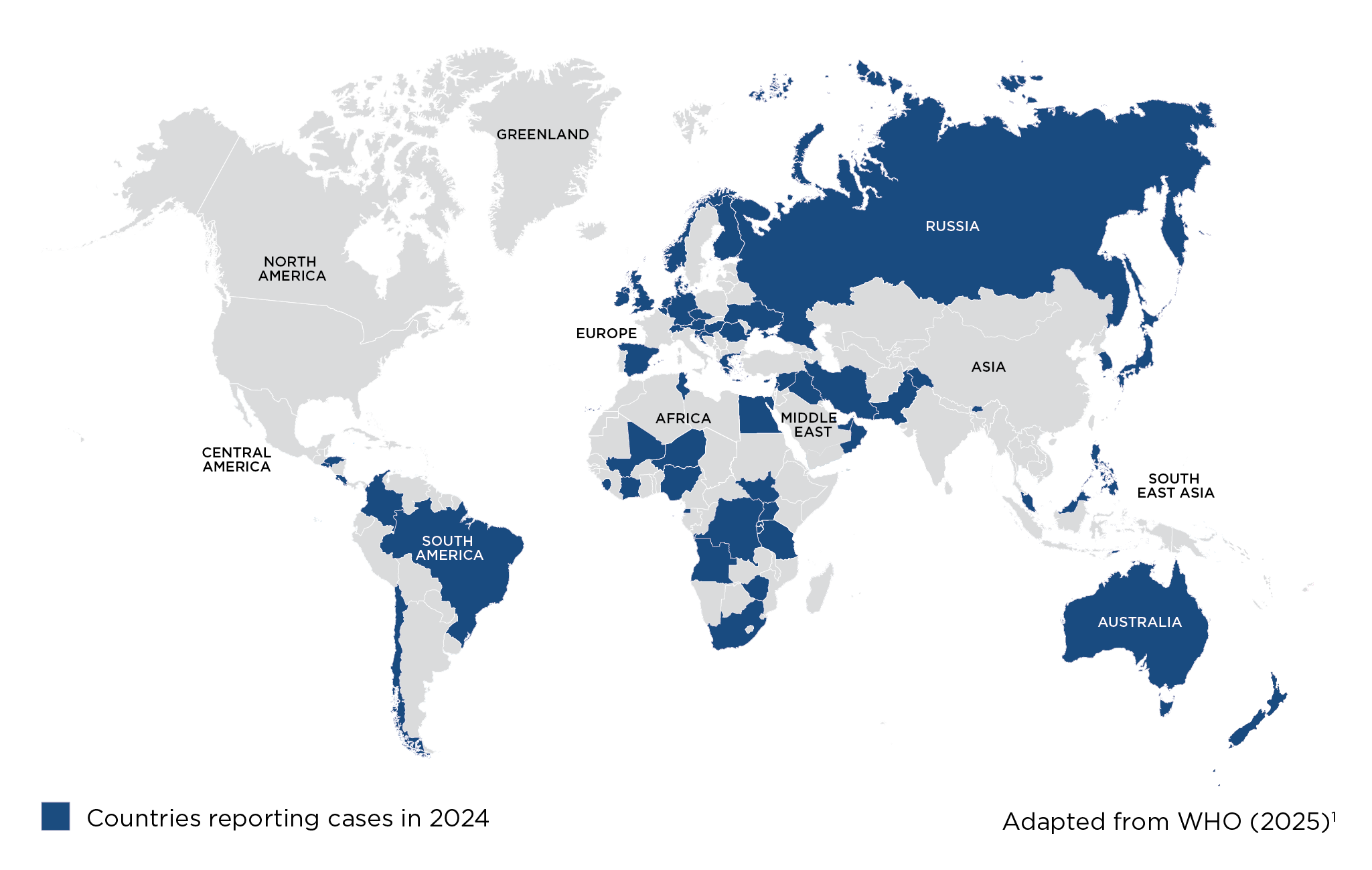Where antibiotics are readily available, only around 1% of people with typhoid die from the disease.2
Disease video
Risk areas for Typhoid

FAQs
-
Key fact
-
How do you get typhoid?
By eating food or drinking water contaminated by faeces from someone who has been infected with typhoid.2
-
Which countries are affected by typhoid?
The disease is common in parts of the world where there is less access to clean water and sanitation is poor.2 The majority of cases occur in South and South East Asia and sub-Saharan Africa (see map).1,2
-
What are the symptoms of typhoid?
Symptoms will usually start 1-2 weeks after being exposed to the bacteria2 and may include fever, headache, general aches and pains, a cough, constipation or diarhhoea.2,3
-
How serious is typhoid?
If caught and treated early, patients can start to feel better in a few days.3 However, if the patient goes for more than a few weeks untreated, complications can occur leading – in severe cases – to bleeding and perforation of the bowel, or damage to the brain.2
-
Can I prevent getting typhoid?
You can take the following precautions to help reduce your risk of infection:
- Visit your nearest convenient pharmacy or specialist travel health clinic for a risk assessment before your trip
- Avoid eating raw or undercooked meat, seafood or fish, and uncooked veg, raw or unpeeled fruit. Choose freshly-cooked food that’s served piping hot or fruit that you peel yourself.4
- Avoid ice and stick to drinks in sealed bottles or cans, or freshly boiled hot drinks.4
- Wash your hands frequently, especially before eating and handling food, and after using the toilet.4
Ready to get started? Check now for your nearest travel health clinic.
Get friendly advice from the UK's largest network of travel clinics*.
* This list is not exhaustive and other travel health providers are available.
References
- World Health Organization. Typhoid reported cases and incidence. Available online: https://immunizationdata.who.int/global/wiise-detail-page/typhoid-reported-cases-and-incidence?YEAR=. (Last accessed May 2025)
- World Health Organization. Weekly Epidemiological Record. Typhoid vaccines: WHO position paper – March 2018. Available online: https://apps.who.int/iris/bitstream/handle/10665/272272/WER9313.pdf?ua=1 (Last accessed May 2025)
- NHS. Conditions. Typhoid fever. September 2021. Available online: https://www.nhs.uk/conditions/typhoid-fever/ (Last accessed May 2025)
- Centers for Disease Control and Prevention. Yellow Book 2026. Food & Water Precautions for Travelers. April 2025. Available online: https://www.cdc.gov/yellow-book/hcp/preparing-international-travelers/food-and-water-precautions-for-travelers.html. (Last accessed May 2025)
UK-BOTB-2500024 May 2025
